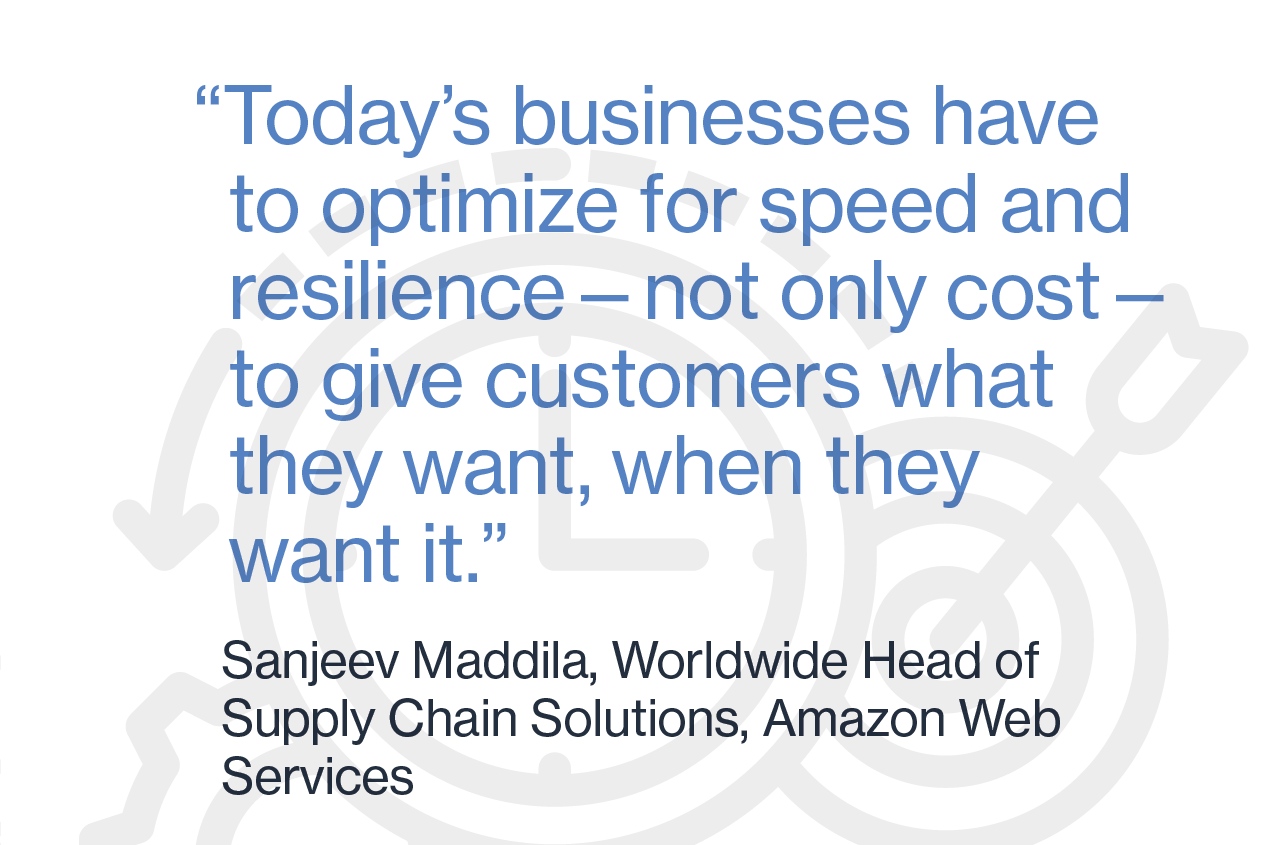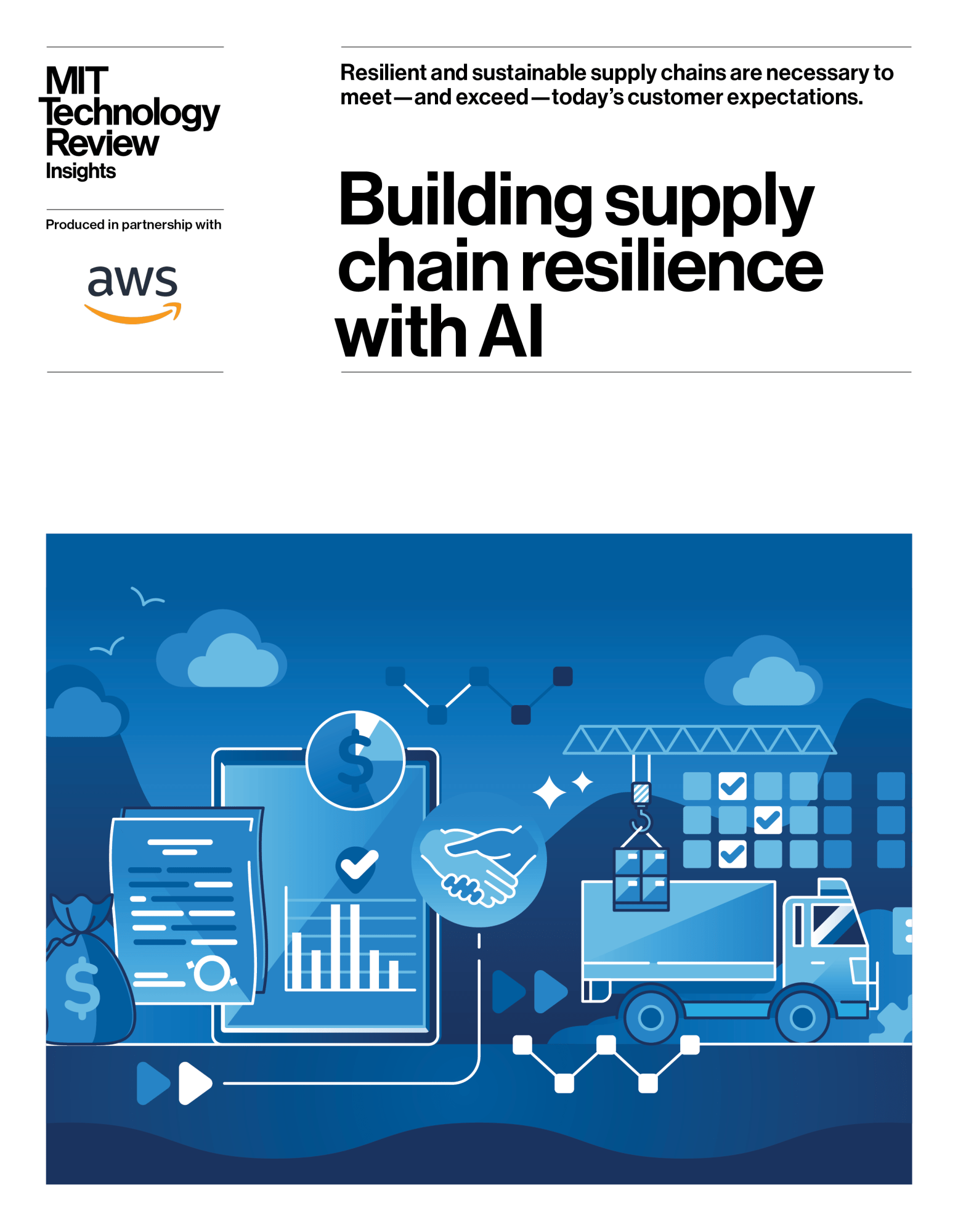Building supply chain resilience with AI
If the last five years have taught businesses with complex supply chains anything, it is that resilience is crucial. In the first three months of the covid-19 pandemic, for example, supply-chain leader Amazon grew its business 44%. Its investments in supply chain resilience allowed it to deliver when its competitors could not, says Sanjeev Maddila, worldwide head of supply chain solutions at Amazon Web Services (AWS), increasing its market share and driving profits up 220%. A resilient supply chain ensures that a company can meet its customers’ needs despite inevitable disruption.
Today, businesses of all sizes must deliver to their customers against a backdrop of supply chain disruptions, with technological changes, shifting labor pools, geopolitics, and climate change adding new complexity and risk at a global scale. To succeed, they need to build resilient supply chains: fully digital operations that prioritize customers and their needs while establishing a fast, reliable, and sustainable delivery network.
The Canadian fertilizer company Nutrien, for example, operates two dozen manufacturing and processing facilities spread across the globe and nearly 2,000 retail stores in the Americas and Australia. To collect underutilized data from its industrial operations, and gain greater visibility into its supply chain, the company relies on a combination of cloud technology and artificial intelligence/machine learning (AI/ML) capabilities.
“A digital supply chain connects us from grower to manufacturer, providing visibility throughout the value chain,” says Adam Lorenz, senior director for strategic fleet and indirect procurement at Nutrien. This visibility is critical when it comes to navigating the company’s supply chain challenges, which include seasonal demands, weather dependencies, manufacturing capabilities, and product availability. The company requires real-time visibility into its fleets, for example, to identify the location of assets, see where products are moving, and determine inventory requirements.
Currently, Nutrien can locate a fertilizer or nutrient tank in a grower’s field and determine what Nutrien products are in it. By achieving that “real-time visibility” into a tank’s location and a customer’s immediate needs, Lorenz says the company “can forecast where assets are from a fill-level perspective and plan accordingly.” In turn, Nutrien can respond immediately to emerging customer needs, increasing company revenue while enhancing customer satisfaction, improving inventory management, and optimizing supply chain operations.
“For us, it’s about starting with data creation and then adding a layer of AI on top to really drive recommendations,” says Lorenz. In addition to improving product visibility and asset utilization, Lorenz says that Nutrien plans to add AI capabilities to its collaboration platforms that will make it easier for less-tech-savvy customers to take advantage of self-service capabilities and automation that accelerates processes and improves compliance with complex policies.
To meet and exceed customer expectations with differentiated service, speed, and reliability, all companies need to similarly modernize their supply chain operations. The key to doing so—and to increasing organizational resilience and sustainability—will be applying AI/ML to their extensive operational data in the cloud.

Resilience as a business differentiator
Like Nutrien, a wide variety of organizations from across industries are discovering the competitive advantages of modernizing their supply chains. A pharmaceutical company that aggregates its supply chain data for greater end-to-end visibility, for example, can provide better product tracking for critically ill customers. A retail startup undergoing meteoric growth can host its workloads in the cloud to support sudden upticks in demand while minimizing operating costs. And a transportation company can achieve inbound supply chain savings by evaluating the total distance its fleet travels to reduce mileage costs and CO2 emissions.
This content was produced by Insights, the custom content arm of MIT Technology Review. It was not written by MIT Technology Review’s editorial staff.


